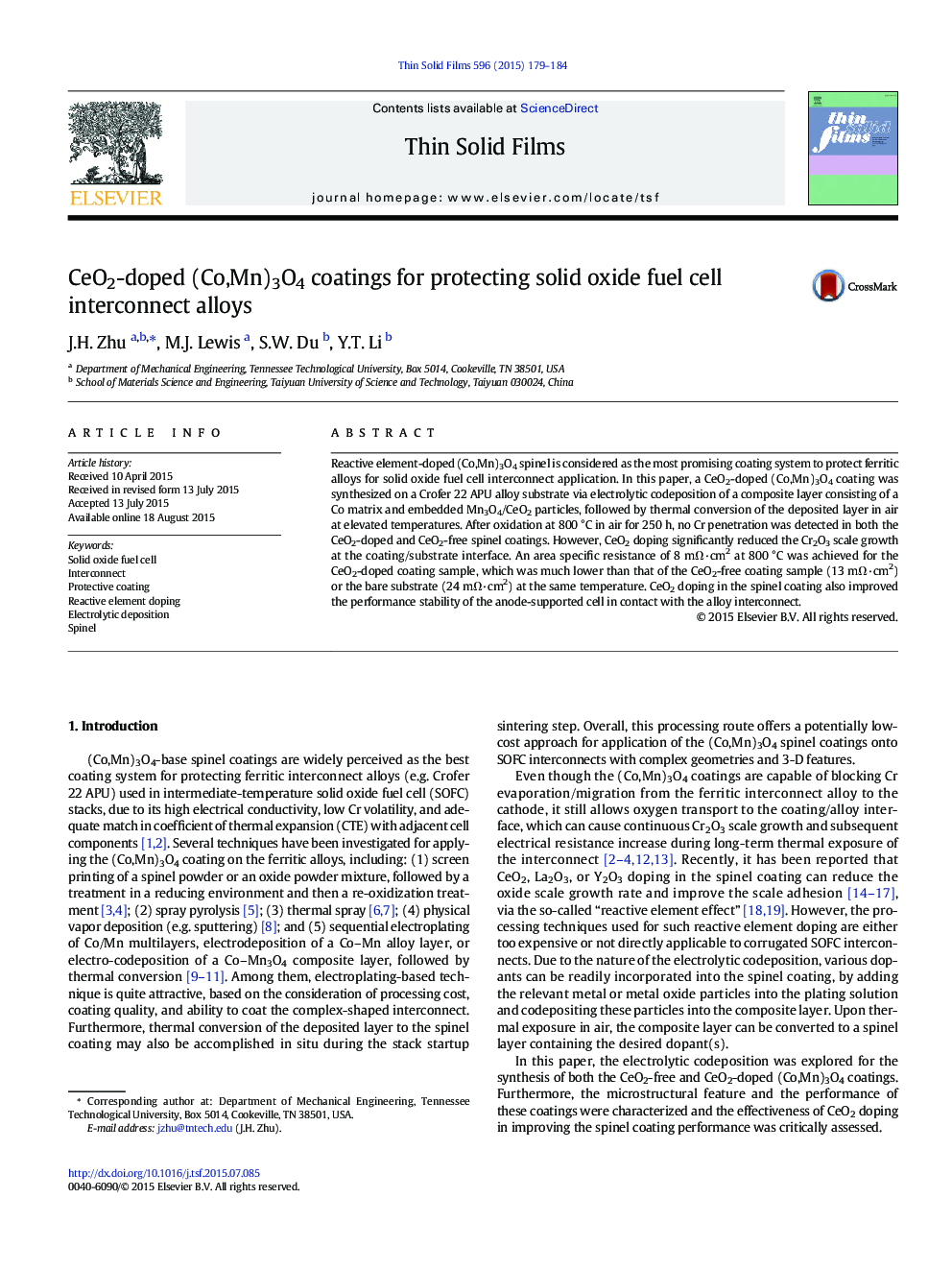| Article ID | Journal | Published Year | Pages | File Type |
|---|---|---|---|---|
| 1664524 | Thin Solid Films | 2015 | 6 Pages |
•Electrolytic codeposition was utilized to deposit a Co + Mn3O4 + CeO2 composite layer.•A CeO2-doped (Co,Mn)3O4 coating was achieved after thermal conversion of the deposited layer.•CeO2 doping improved the spinel coating performance as related to the interconnect application.
Reactive element-doped (Co,Mn)3O4 spinel is considered as the most promising coating system to protect ferritic alloys for solid oxide fuel cell interconnect application. In this paper, a CeO2-doped (Co,Mn)3O4 coating was synthesized on a Crofer 22 APU alloy substrate via electrolytic codeposition of a composite layer consisting of a Co matrix and embedded Mn3O4/CeO2 particles, followed by thermal conversion of the deposited layer in air at elevated temperatures. After oxidation at 800 °C in air for 250 h, no Cr penetration was detected in both the CeO2-doped and CeO2-free spinel coatings. However, CeO2 doping significantly reduced the Cr2O3 scale growth at the coating/substrate interface. An area specific resistance of 8 mΩ·cm2 at 800 °C was achieved for the CeO2-doped coating sample, which was much lower than that of the CeO2-free coating sample (13 mΩ·cm2) or the bare substrate (24 mΩ·cm2) at the same temperature. CeO2 doping in the spinel coating also improved the performance stability of the anode-supported cell in contact with the alloy interconnect.
